Reed root
[Medicinal use] This product is the rhizome of the grass plant reed.
[Nature and flavor and meridians] Sweet, cold. Enter the lung and stomach meridians.
[Effects] Clear lung and stomach heat, produce fluid and quench thirst.
[Clinical application] It is used for high fever and thirst in febrile diseases, stomach heat vomiting, as well as lung heat cough, thick and yellow phlegm and other symptoms.
If the warm and hot evil attacks the lung network, it will cause lung heat cough, and if it attacks the stomach, it will cause less fluid and thirst; if it affects the smooth flow of stomach qi, it will go up and cause nausea. Reed root can clear lung and stomach heat, and has the effect of producing fluid, so it is suitable for symptoms of lung and stomach stagnation. In clinical application, this product is often used in combination with Ophiopogon japonicus and Radix Trichosanthis to clear heat and produce fluid; with Rhizoma Anemarrhenae and Loquat Leaves to clear heat and stop vomiting; with Trichosanthes peel, Rhizoma Anemarrhenae, Fritillaria thunbergii to clear lungs and stop cough; with wax gourd seeds, raw coix seeds, and peach kernels to clear lungs and discharge pus.
[Prescription name] Fresh reed root, live reed root (use fresh, remove the nodes when using), dried reed root (use dried, the effect is less)
[General dosage and usage] Use one liang or one chi for fresh, and five qian to one liang for dried, decoct and take.
[Comments] 1. Reed root is mainly used in the following two aspects in clinical practice. It can clear lung heat and remove phlegm and pus, and can also clear stomach heat and produce fluid to stop vomiting. Although it is cold in nature, it tastes sweet and light and has weak effect. It can only be used as an auxiliary medicine to clear the lungs and stomach. However, it has an advantage, that is, it is not greasy in nature, produces fluid without clinging to evil. It can be used for all febrile diseases with heat clinging to the defense and qi, or if there are symptoms of thirst after fever and damage to fluid.
2. Reed stem soup originally used the above-ground stems of reeds, not the rhizomes of reeds, but because it is not available in general pharmacies, reed roots are used instead. It has been used clinically for a long time, which shows that reed stems and reed roots have the same effect. Therefore, fresh reed roots and reed stems can be collected and used together in rural cooperative medical stations, which can not only save manpower for digging reed roots, but also expand the source of medicine.
[Example of prescription] Reed stem soup “Qianjin Fang”: reed stems, coix seeds, peach kernels, melon slices. Treat lung abscess, fever, cough, sputum with blood and fishy smell.
Reed root powder “Shenghui Fang”: reed root, Ophiopogon japonicus, Trichosanthes root, licorice, bamboo shavings. Treat dry mouth.
This product is the fresh or dried rhizome of Phragmites communis Trin., a grass family plant. It can be dug all year round, remove the buds, fibrous roots and membranous leaves, and use fresh or dry.
[Propriétés]
Fresh reed roots are long cylindrical, some are slightly flat, of varying lengths, and 1~2cm in diameter. The surface is yellow-white and shiny, the outer skin is loose and can be peeled off, the nodes are ring-shaped, and there are residual roots and bud marks. It is light, tough, and not easy to break. The cut surface is yellowish white, hollow, with a wall thickness of 1~2mm and small holes arranged in a ring. It has a slight smell and tastes sweet.
The root of the reed is flat and cylindrical. The nodes are hard and there are longitudinal wrinkles between the nodes.
[Identification]
(1) This product is light gray-brown. The surface of the epidermal cells shows that long cells and two short cells (cork cells and siliceous cells) are arranged alternately; the long cells are long and have thick and wavy walls and small pores; the cork cells are crescent-shaped, and the siliceous cells are smaller than the cork cells, oblate, and the fibers are bundled or scattered individually, with a diameter of 6~33um, uneven wall thickness, some are thick on one side and thin on the other, and the pores are dense. Stone cells are mostly scattered individually, with irregular shapes, some are fibrous, and some have short branches, with a wide range of sizes, 5~40um in diameter, and uneven wall thickness. Thick-walled cells are rectangular or oblong, with thick walls and dense pores and pores.
(2) Take 1g of the powder of this product (fresh product is dried and crushed), add 10ml of chloroform, ultrasonically treat for 20 minutes, filter, and use the filtrate as the test solution. Take 1g of Phragmites australis as a control medicinal material and prepare the control medicinal material solution in the same way. According to the thin layer chromatography method (General Rule 0502), take 10 of each of the above two solutions and spot them on the same silica gel G thin layer plate, use petroleum ether (60~90℃)-ethyl formate (15:5) as the developing agent, develop, take out, dry, spray with 10% sulfuric acid ethanol solution, heat at 110℃ until the spots are clearly colored, and examine under ultraviolet light (365nm). In the chromatogram of the test product, fluorescent spots of the same color appear at the corresponding position of the chromatogram of the control medicinal material.
[Inspection]
The moisture content shall not exceed 12.0% (General Rule 0832 Method 2).
The total ash content shall not exceed 11.0% (General Rule 2302). Acid insoluble ash content shall not exceed 8.0% (General Rule 2302).
Morceaux de décoction
[Traitement]
Fresh reed root Remove impurities, wash, cut into sections.
[Propriétés]
This product is in cylindrical sections. The surface is yellowish white, shiny, and the nodes are ring-shaped. The cut surface is yellowish white, hollow, and has small holes arranged in rings. Slight smell, sweet taste.
Reed root Remove impurities, wash, cut into sections, and dry.
[Propriétés]
This product is in flat cylindrical sections. The surface is yellowish white, with longitudinal wrinkles between nodes. The cut surface is hollow, and has small holes arranged in rings
[Extrait]
Determined by the hot leaching method under the water-soluble extract determination method (General Rule 2201), it shall not be less than 12.0%.
[Identification][Inspection]
Identique aux matières médicinales.
[Nature et saveur et méridiens)
Sweet, cold. Enter the lung and stomach meridians.
[Fonctions et indications]
Clears heat and purges fire, promotes fluid production and quenches thirst, relieves restlessness, stops vomiting, and promotes urination. Used for fever, thirst, lung heat, cough, lung abscess, vomiting pus, stomach heat, vomiting, and hot stranguria.
Usage and dosage] 15~30g; double the dosage for fresh products, or mash it into juice.
[Storage] Dried reed root is placed in a dry place; fresh reed root is buried in wet sand.
Where is the main origin of reed root?
It is distributed all over China.
Where is the main medicinal part of reed root?
Medicinal part of reed root:
This product is the fresh or dried rhizome of Phragmites communis Trin., a grass plant.
It can be dug all year round, remove the buds, fibrous roots and membranous leaves, and use it fresh or dry it.
Characteristics of the medicinal part of reed root:
Fresh reed root is long cylindrical, some are slightly flat, of different lengths, and 1~2cm in diameter. The surface is yellow-white and shiny, the outer skin is loose and can be peeled off, the nodes are ring-shaped, and there are residual roots and bud marks. It is light, tough, and not easy to break. The cut surface is yellow-white, hollow, with a wall thickness of 1~2mm and small holes arranged in a ring. It has a slight smell and tastes sweet. The root of reed is flat and cylindrical. The nodes are hard and there are longitudinal wrinkles between the nodes.
How are the roots of reed recorded in ancient books?
“Famous Doctors’ Records”: “It can cure thirst and exogenous heat, and stop urination.
“Compendium of Materia Medica”: “It can relieve severe fever and stimulate the appetite. It can treat hiccups.
“Compendium of Materia Medica”: “The root of reed tastes sweet and cold but is non-toxic. Sweetness can benefit the stomach and harmonize the middle, coldness can remove heat and reduce fire, heat can relieve stomach and harmonize, then the body fluids will be unblocked and thirst will be stopped… Fire rises and stomach heat will cause nausea and vomiting, and hiccups will not stop. Sweetness and coldness can remove heat and calm the stomach, and can also reduce gas, so it is the main treatment.
Effets
The root of reed has the effects of clearing heat and purging fire, promoting body fluid and relieving thirst, removing restlessness, stopping vomiting, and diuresis.
The main effects and clinical application of reed root What is the application?
Reed root is used for fever, thirst, lung heat, cough, lung abscess, vomiting pus, stomach heat, vomiting, and hot stranguria.
Fever, thirst
It is often taken with Ophiopogon japonicus, pear, water chestnut, and lotus root.
Lung heat, cough, lung abscess, vomiting pus
It is often used with mulberry leaves, chrysanthemum, bitter almonds, etc. to treat cough caused by wind-heat invading the lungs. .
It is often used with Scutellaria baicalensis, Fritillaria thunbergii, etc. to treat cough caused by pathogenic heat blocking the lungs.
It is often used with Scutellaria baicalensis, Fritillaria thunbergii, etc. to treat lung abscess with vomiting fishy and smelly pus and sputum. It is often used with coix seed, wax gourd seed, etc. Stomach heat vomiting
Can be used alone to decoct the juice and drink frequently, or used with bamboo leaves, ginger, etc.
Heat and pain in stranguria
It is often used with Imperata root, Plantago seed, etc.
What other effects does reed root have?
In my country’s traditional food culture, some Chinese medicinal materials are often widely consumed as food ingredients among the people, that is, substances that are both food and Chinese medicinal materials according to tradition (i.e. edible medicinal substances). According to the documents issued by the National Health Commission and the State Administration for Market Regulation, reed root can be used as both medicine and food within a limited range of use and dosage.
Common medicinal diet recipes for reed root are as follows:
Reed root tea
·30g reed root, 30g fresh radish, 12g green onion, 6 green olives. ·Wash the reed root, radish, green onion and olives separately, chop them, put the above 4 flavors into a thermos, and pour in an appropriate amount of boiling water. Cover with a lid About 15 minutes. Drink instead of tea.
Bamboo Ru and Reed Root Tea
30g bamboo ru, 30g reed root, 3 slices of ginger. Decoction the above three ingredients and drink instead of tea. Note: The use of Chinese herbal medicines must be based on syndrome differentiation and treatment. They should be used under the guidance of professional Chinese medicine practitioners. They should not be used at will, and should not be used at will. Chinese medicine prescriptions and advertisements should not be used at will.
What are the compound preparations containing reed root?
Sangju Yin
Dispels wind and heat, clears lungs and relieves coughs. Indications: Initial onset of wind-heat and mild symptoms of superficial heat. Cough, mild body heat, weak mouth, and floating pulse.
Yinqiao Powder
Pungent and cool, penetrates the surface, clears heat and detoxifies. Used for exogenous wind-heat, fever and headache, dry mouth and cough, pain, and short and red urine.
Sangju Cold Pills
Dispel wind and heat, clear lungs and relieve coughs. Used for the initial onset of wind-heat cold, headache, cough, dry mouth, and pain.
Vitamin C Yinqiao Tablets
Dispel wind and relieve the surface, clear heat and detoxify. Used for exogenous wind-heat Influenza, symptoms include fever, headache, cough, dry mouth, and sore throat.
Modern research progress on reed root
This product has multiple pharmacological effects such as antipyretic, sedative, and liver protection.
Usage
Reed root has the effects of clearing heat and purging fire, promoting fluid and quenching thirst, eliminating restlessness, stopping vomiting, and diuresis. Use reed root slices more often. Please follow the doctor’s instructions for specific usage and dosage
How to use reed root correctly?
When decoction of reed root is taken orally, the usual dosage is 15~30g, and the dosage of fresh products can be increased as appropriate.
Reed root is used fresh or mashed to drink juice, which has good heat-clearing and fluid-promoting effects, and the usual dosage is 60~120g.
Reed root is generally used in decoctions, decoctions are taken, and can also be made into powders or pills for consumption. However, the use of Chinese medicinal materials must be differentiated and treated, and should be used under the guidance of professional Chinese medicine practitioners. They should not be used at will, and they should not be used at will, let alone listen to Chinese medicine prescriptions and advertisements.
In addition, reed root can also be used for daily health care. Common ways of consumption are as follows:
· Cook porridge (raw reed root porridge): 500g fresh reed root, 15g bamboo shavings, 6g ginger, 100g polished rice for porridge. Used for lung heat cough, yellow and thick phlegm, dry throat and thirst.
· Cook porridge (gypsum reed root porridge): 30g gypsum, 60g fresh reed root, 100g polished rice for porridge. Used for fever and thirst in febrile diseases
How to prepare reed root?
Fresh reed root
Take fresh products, remove residual stems, membranous leaves, fibrous roots and impurities, wash off the soil, and cut into sections or mash juice when used.
Reed root
Take the original medicinal material, remove impurities and fibrous roots, wash, moisten slightly, cut into sections, and dry.
How to use reed root correctly?
When taking reed root decoction orally, the common dosage is 15~30g, and the dosage of fresh products can be increased as appropriate.
Reed root can be used fresh or mashed to drink juice, which has good heat-clearing and fluid-inducing effects. The common dosage is 60~120g.
Reed root is generally used in decoctions, decocted and taken, and can also be made into powder or pills. However, the use of Chinese medicinal materials must be based on syndrome differentiation and treatment, and should be used under the guidance of professional Chinese medicine practitioners. It should not be used at will, and it should not be used at will, let alone listen to Chinese medicine prescriptions and advertisements.
In addition, reed root can also be used for daily health care. The common methods of consumption are as follows:
· Cook porridge (raw reed root porridge): 500g fresh reed root, 15g bamboo shavings, 6g ginger, and 100g polished rice. It is used for lung heat cough, yellow and thick phlegm, dry throat and thirst.
· Cook porridge (gypsum reed root porridge): 30g gypsum, 60g fresh reed root, and 100g polished rice. Used for fever and thirst in febrile diseases
How to prepare reed root?
Fresh reed root
Take fresh products, remove residual stems, membranous leaves, fibrous roots and impurities, wash off the soil, and cut into sections or mash juice when using.
Reed root
Take the original medicinal materials, remove impurities and fibrous roots, wash, moisten slightly, cut into sections, and dry.
Which drugs should be used with reed root and special attention?
The combined use of Chinese medicine and the combined use of Chinese and Western medicine requires syndrome differentiation and clinical individualized treatment.
Si vous utilisez d’autres médicaments, veuillez consulter un médecin avant de prendre le médicament et informez-le de toutes les maladies diagnostiquées et des plans de traitement que vous recevez.
Mode d'emploi
Reed root is sweet and cold, so people with spleen and stomach deficiency should take it with caution.
What precautions should be taken when using reed root?
·People with spleen and stomach deficiency should take it with caution.
·This product has a slight smell and a sweet taste. It is better to use thick and uniform strips, yellow-white color, shiny, and without fibrous roots. Use fresh or sun-dried.
During medication, you should avoid eating cold, raw and cold food, spicy and greasy food, and avoid smoking and drinking. . Pregnant and lactating women: If you are pregnant, planning to get pregnant or are lactating, please inform your doctor in time and consult whether Chinese medicine can be used for treatment
· Enfants : La médication des enfants doit être administrée sous la surveillance d'un médecin et d'un adulte.
· Veuillez conserver correctement les médicaments et ne donnez pas vos propres médicaments à d’autres.
Évitez d’utiliser des ustensiles en cuivre ou en fer pour préparer des décoctions de médicaments.
How to identify and use reed root?
Reed root is the rhizome of reed, and reed stem is the tender stem of reed. The two come from the same plant and have similar effects.
However, reed root is good at producing body fluid and quenching thirst, while reed stem is good at clearing lung heat, with a slight emphasis. At present, there is no reed stem available in the medicine market, so reed root can be used instead.
Conseils sur les médicaments
Les questions les plus fréquemment posées par les patients
How to make reed root porridge
[Composition] 100~150 grams of fresh reed root, 15~20 grams of bamboo mushroom, 100 grams of polished rice, and 2 slices of ginger. [Preparation] Wash fresh reed root, cut into small pieces, fry with bamboo shavings to extract juice, remove residue, add rice and cook porridge, add ginger when the porridge is about to be cooked, and cook for a while (the porridge should be thin).
[Effects and indications] Clear heat, relieve restlessness, promote body fluid, and stop vomiting. Suitable for women during pregnancy and all symptoms of thirst, irritability, stomach heat vomiting or hiccups caused by high fever.
[Usage and dosage] Twice a day, 3 to 5 days as a course of treatment.
[Note] It is not suitable for patients with stomach cold vomiting and lung cold cough.
Effects and functions of Yinqiao Powder
Yinqiao Powder is a Chinese patent medicine. It is composed of honeysuckle, forsythia, mint, schizonepeta, light black beans, burdock, platycodon, light bamboo leaves, reed root, and licorice.
It has the effects of pungent and cool penetrating the surface, clearing heat and detoxifying. It is used for wind-heat cold, fever and headache, dry mouth and cough, sore throat, and short and red urine.
How to soak reed root in water?
There are many ways to soak reed root in water, the most common ones are reed root tea and bamboo shavings reed root tea. The soaking methods are as follows: Reed root tea: 30g reed root, 30g fresh radish, 12g green onion, 6 green olives. Wash and chop the reed root, radish, green onion and olives separately, put the above 4 ingredients into a thermos, and pour in an appropriate amount of boiling water. Cover and simmer for about 15 minutes. Drink it instead of tea. Bamboo shavings reed root tea: 30g bamboo shavings, 30g reed root, 3 slices of ginger. Boil the above three ingredients in water and drink it instead of tea.
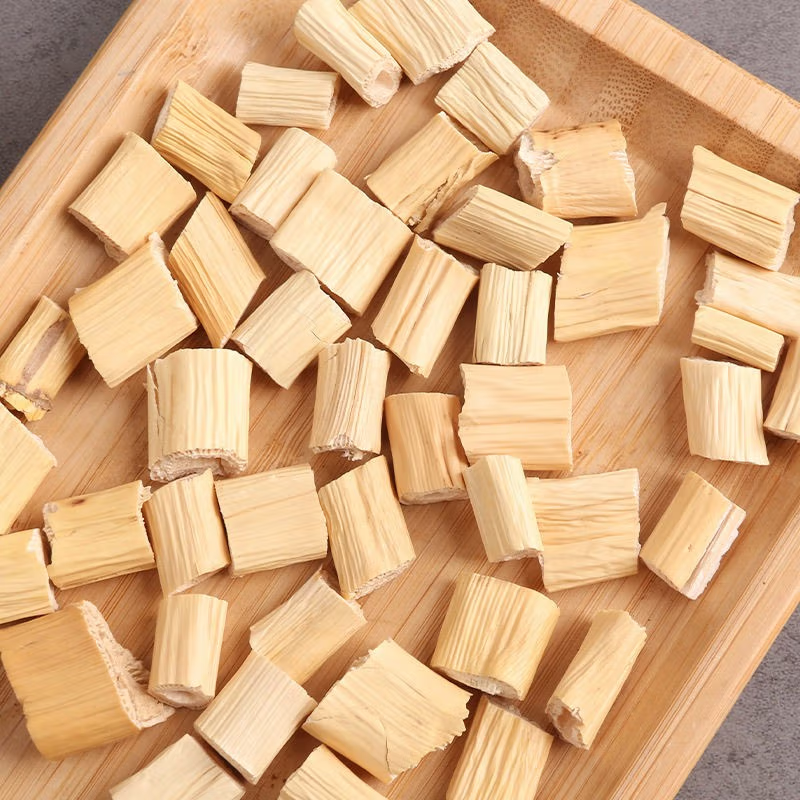

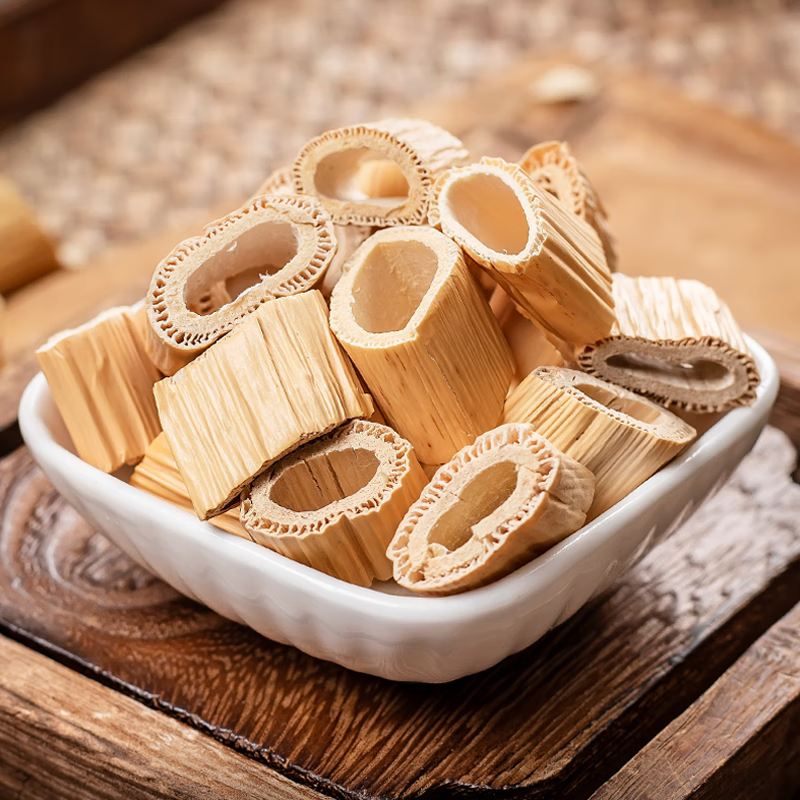

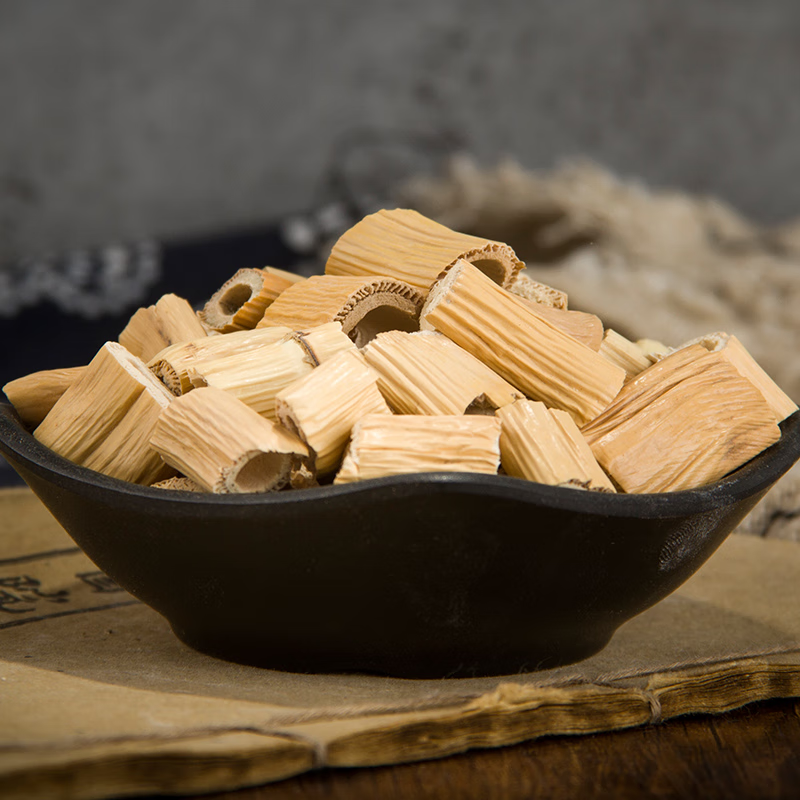
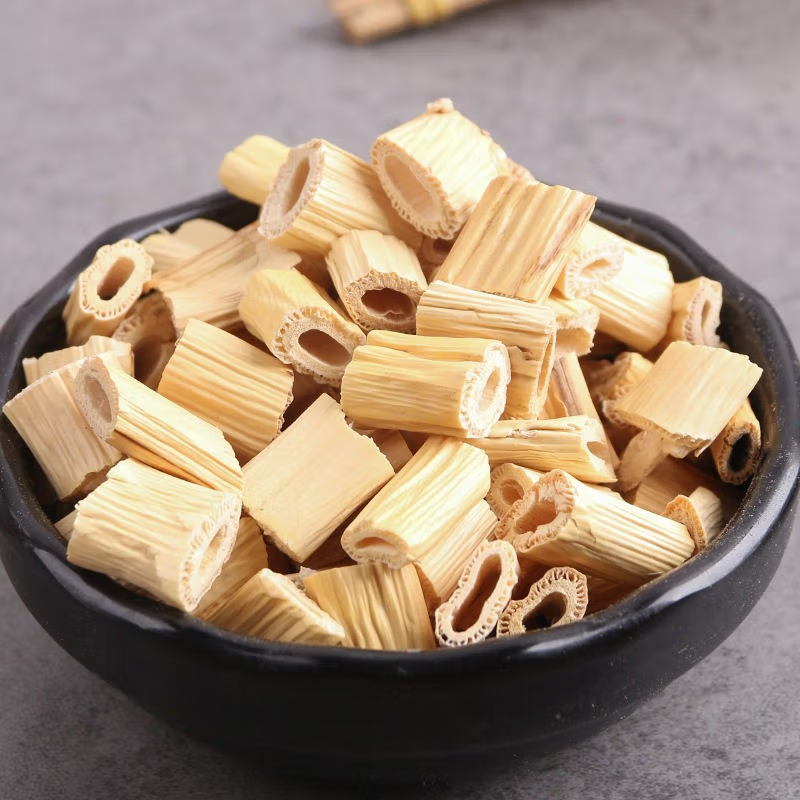

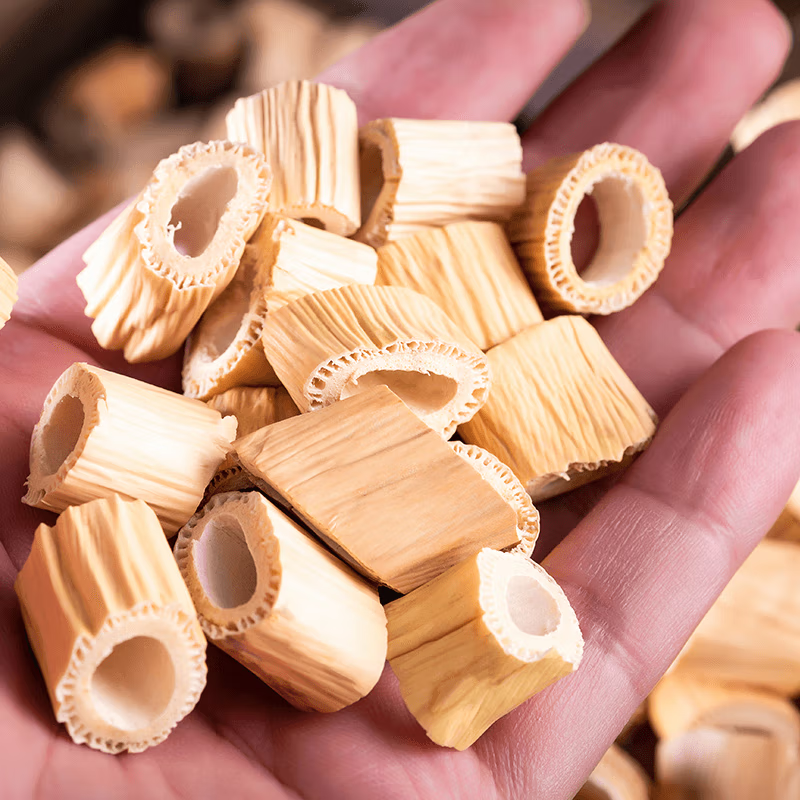

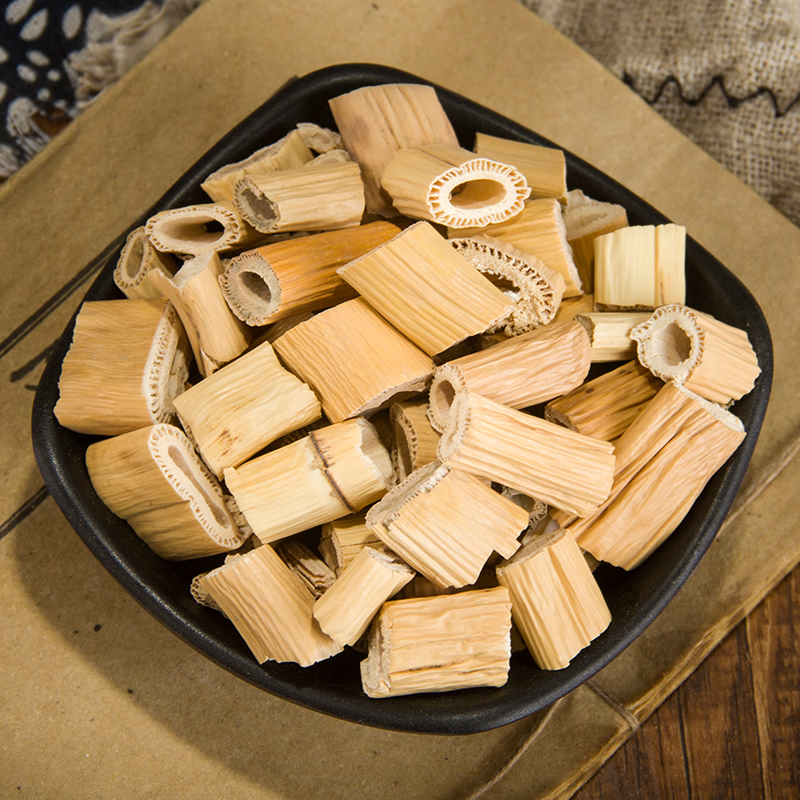
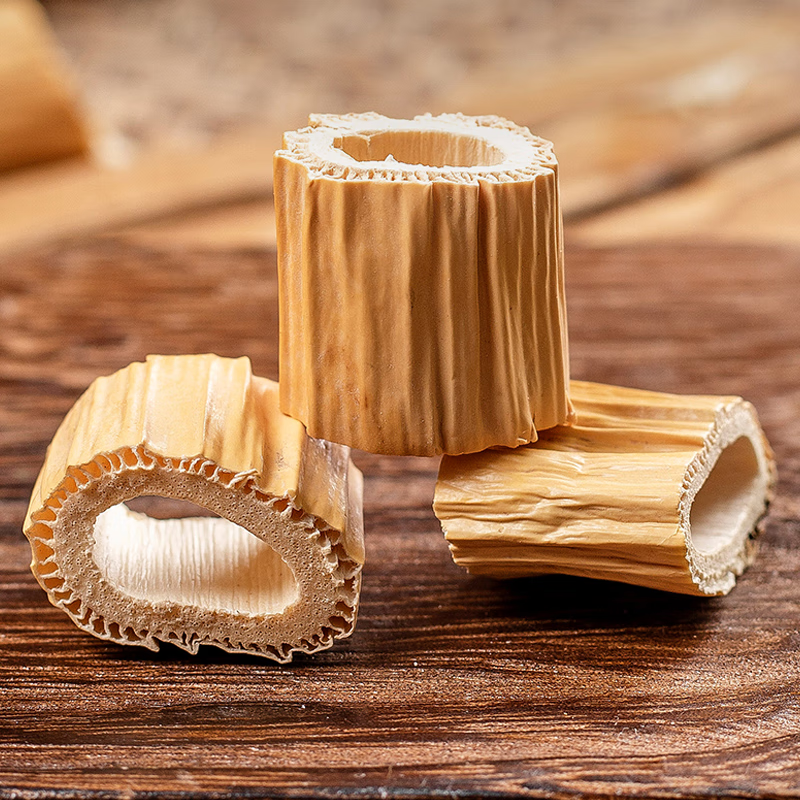
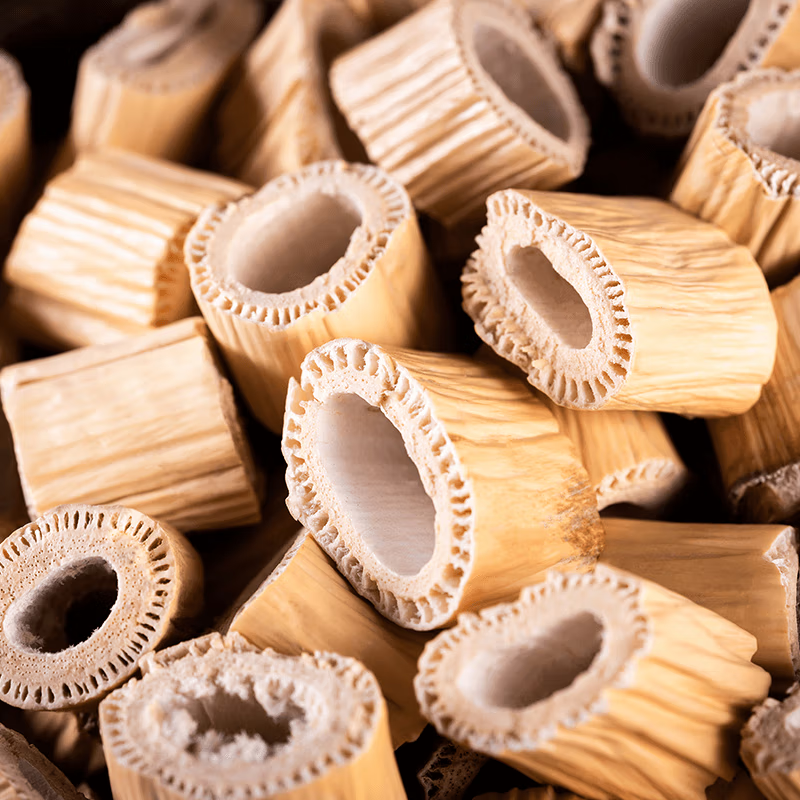
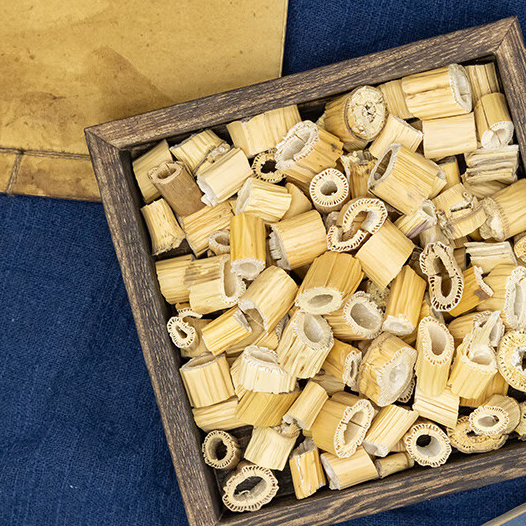

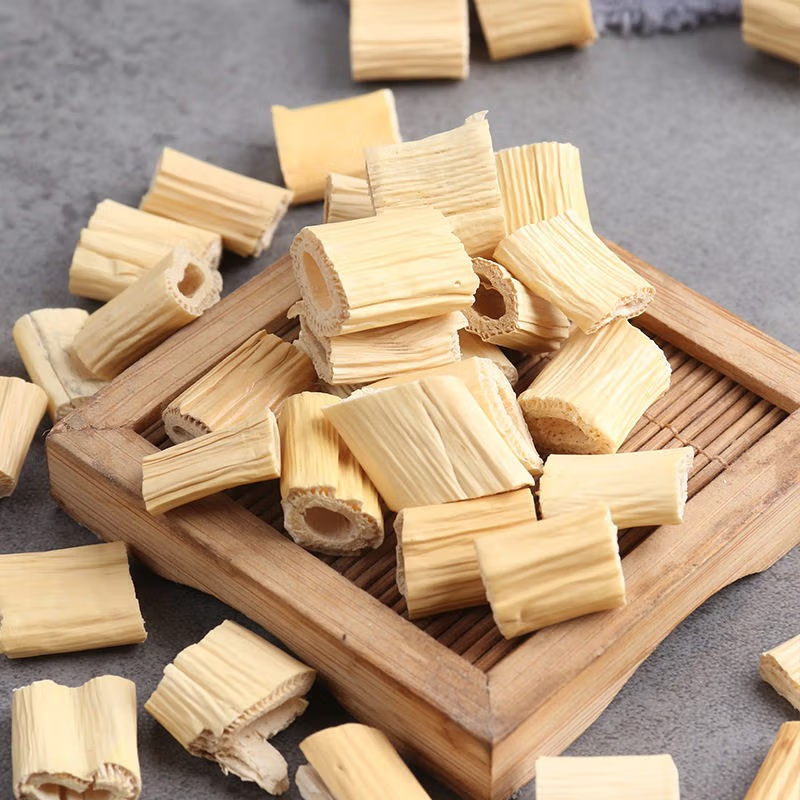


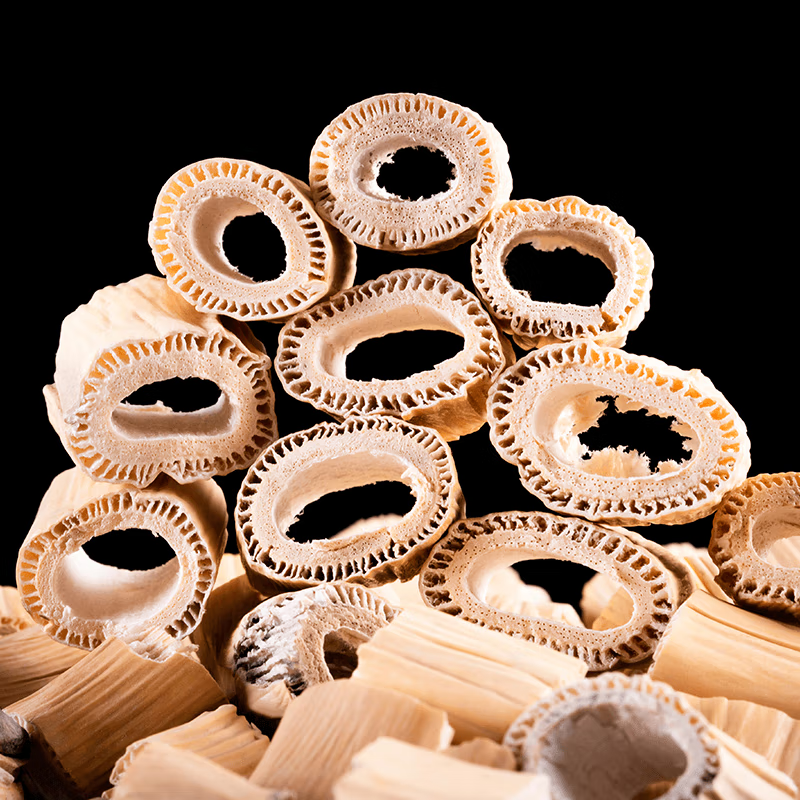
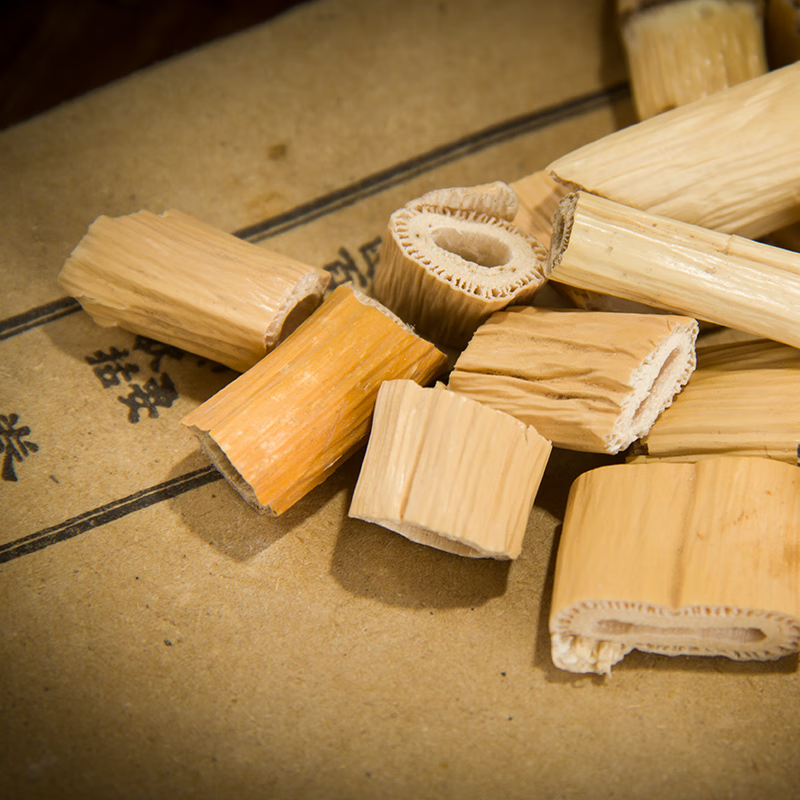
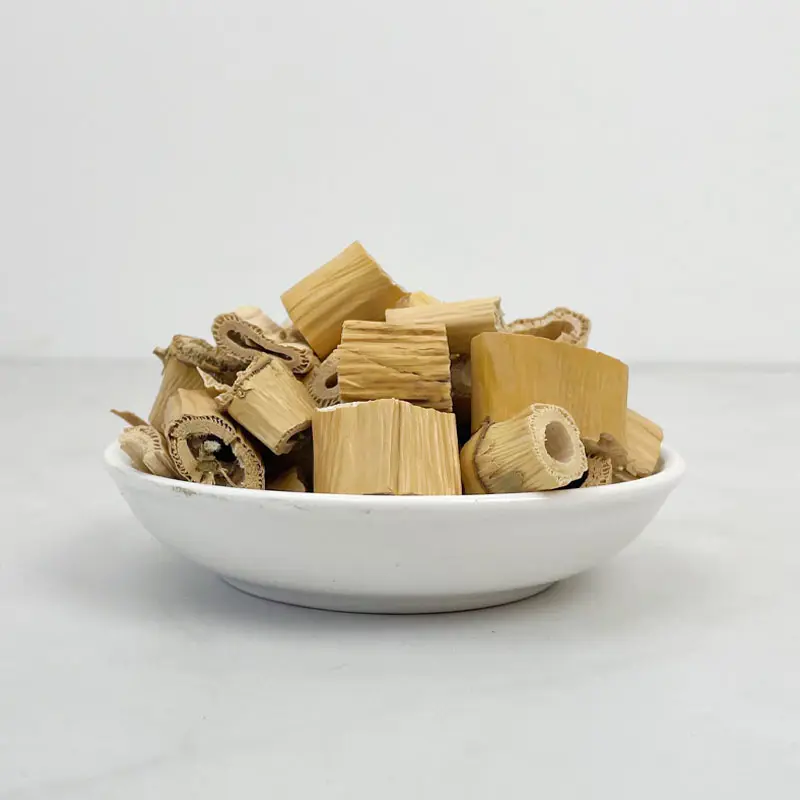




Commentaires
Il n'y a pas encore de critiques.